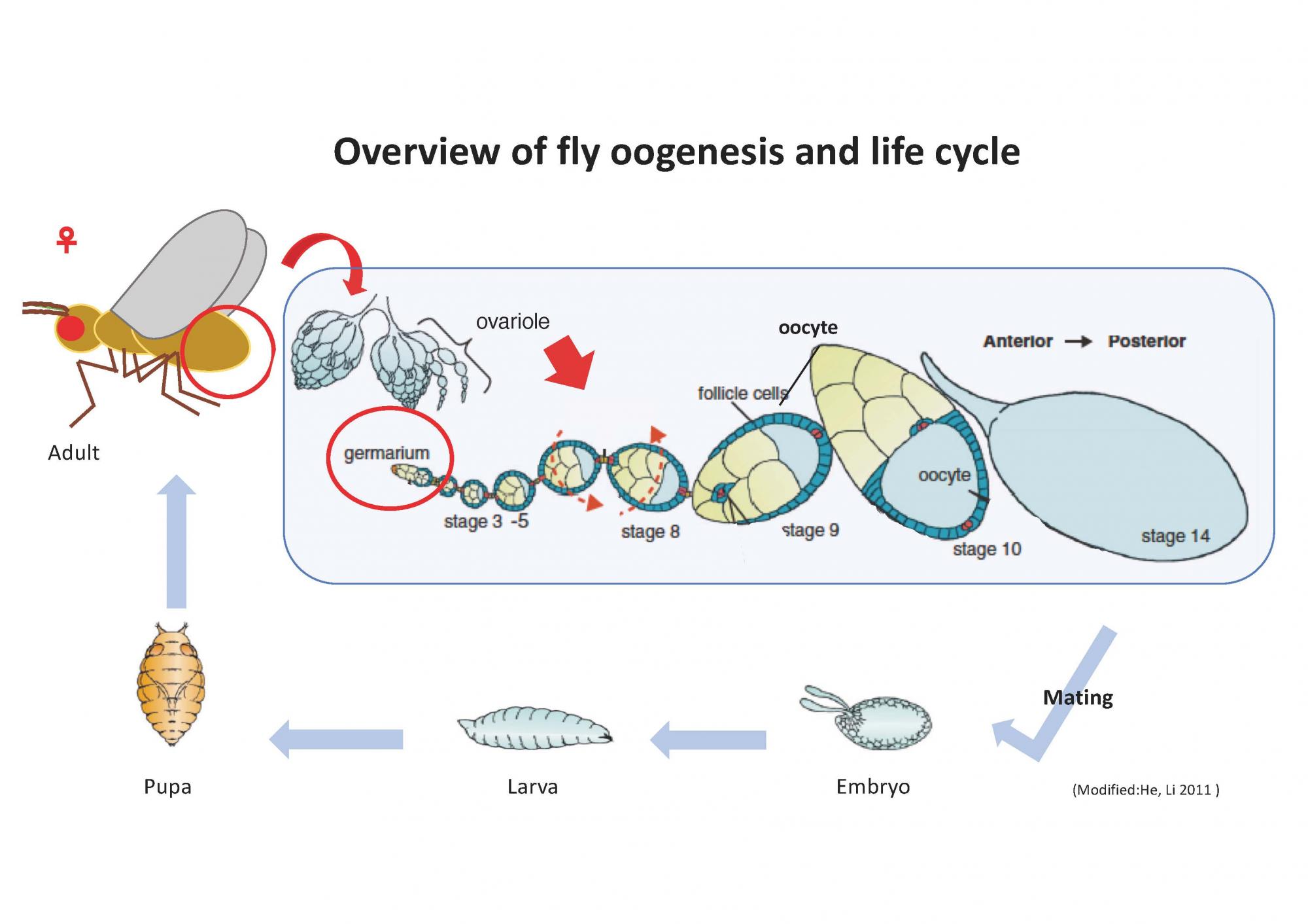FBS Colloquia No.251Germline Biology Group
| Seminar or Lecture |
Stand still ensures maintenance and differentiation of germline cells in Drosophila female MATSUI Masaya [D2/D5] Mechanism of microbiome-enhanced fly oogenesis SUYAMA Ritsuko [Assistant professor] |
|---|---|
| Date and Time | 8 Oct. 2020 (Thu), 12:15-13:00 |
| Place | Online (Zoom) | An email will be sent with the meeting URL, ID, and password on the morning of each colloquium. |
| Language | English |
| Contact |
Name:Shinichi Kawaguchi |
Stand still ensures maintenance and differentiation of germline cells in Drosophila female
For successful sexual reproduction, the process to produce eggs, so called oogenesis, has to be tightly regulated. Drosophila gene, stand still (stil), encodes 35.8kDa BED-type zinc finger protein, whose mutant (stil-KO) almost abrogates ovarian germline cells by the time of eclosion. Although stil mutant females exhibit such severe defects, its molecular mechanism has remained elusive.
We found that upregulation of Dpp signaling pathway, which are female niche signaling and transforms germline cells into germline stem cell-like tumor, rescued the germline cell death defects in stil-KO. In addition, overexpression of p35, an apoptosis inhibitor of baculoviral protein, in stil-KO rescued massive germline cell death even in the absence of stil. These results suggest that Stil protects germline cells committed to differentiate from apoptotic cell death.
Mechanism of microbiome-enhanced fly oogenesis
Microbiome, so-called bacterial flora, is known as one of the environmental factors regulating the nutrition uptake and metabolism, and maintaining the longevity and immune system in the host animals. Besides, the fecundity of the host also has been reported to be enhanced by the microbes. Nevertheless, it is not much known about its cellular and molecular mechanisms. D. melanogaster is an excellent model animal that senses taste and smell through the sensory organs, enabling to analyze the molecular basis of microbiome-enhanced oogenesis with a genetic and biological approach. We will present the updates of our research about the processes of oogenesis activated by microbes, especially the behaviors of germline stem cells. We will also discuss the potentially regulated pathways and the view of microbiome-induced inter-organ communications.

